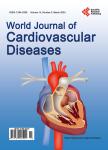Immunoadsorption therapy reduces oxidative stress in patients with dilated cardiomyopathy
Immunoadsorption therapy reduces oxidative stress in patients with dilated cardiomyopathy作者机构:Department of Cardiovascular Medicine Shinshu University School of Medicine Nagano Japan Department of Nephrology Shinshu University School of Medicine Nagano Japan Department of Rheumatology and Clinical Immunology Jichi Medical University Tochigi Japan Division of Bio-Imaging Jichi Medical University Tochigi Japan Division of Cardiology Matsumoto Medical Center Nagano Japan
出 版 物:《World Journal of Cardiovascular Diseases》 (心血管病(英文))
年 卷 期:2012年第2卷第4期
页 面:305-312页
学科分类:1002[医学-临床医学] 100201[医学-内科学(含:心血管病、血液病、呼吸系病、消化系病、内分泌与代谢病、肾病、风湿病、传染病)] 10[医学]
主 题:Autoantibody Immunoglobulin Plasmapheresis
摘 要:Several literatures have reported that the elimination of autoantibodies by immunoadsorption (IA) therapy induced short- and long-term improvements in cardiac function of patients with dilated cardiomyopathy (DCM). We assessed whether reduction in oxidative stress was related to the mechanism underlying left ventricular functional benefit from IA. We studied 7 patients with DCM (New York Heart Association (NYHA) functional class III/IV). Autoantibodies were removed with IA by passing patients’ plasma over tryptophan columns. The level of anti-β1-adrenoreceptor (AR) autoantibodies was measured by enzyme- linked immunosorbent assay. The level of diacron- reactive oxygen metabolite (d-ROM) was determined as a marker of oxidative stress. During IA, the anti- β1-AR autoantibodies titers of all the patients decreased significantly from 27.8 ± 5.0 to 18.7 ± 5.5 U/ml (p 0.01). IA induced the following hemodynamic improvements: cardiac index increased from 1.71 ± 0.40 to 1.97 ± 0.41 l/min/m2 and left ventricular ejection fraction (LVEF) increased from 22.8 ± 6.1 to 29.1±9.1% (p 0.05). d-ROM level decreased significantly from 392.7 ±17.0 to 314.1 ± 22.0 Carratelli units (p 0.05), and was negatively correlated with LVEF before and after IA therapy (r = -0.601, p 0.05). The anti-β1-AR autoantibodies, LVEF and d- ROM returned to the baseline levels at 12 months after IA. In conclusion, oxidative stress reduction may be responsible for the beneficial effect of IA therapy in patients with DCM.



